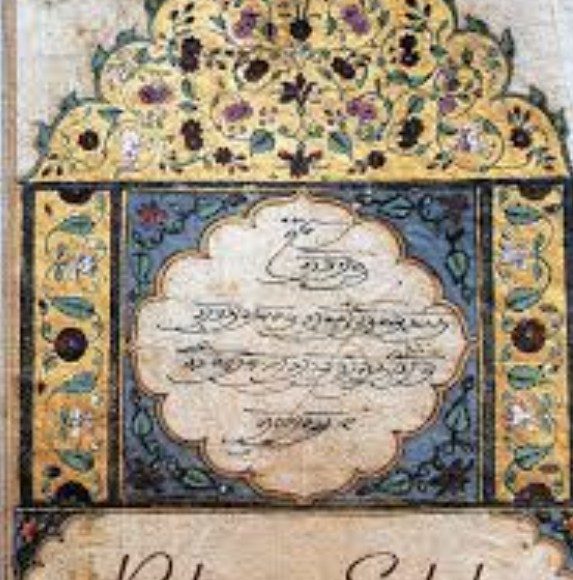RAHRASI is the name given to the main evening prayer of the Sikhs. The word itself implies supplication, though some traditionalist scholars have interpreted it as rahiras, which, in Persian, means “the straight path”—the path of faith and devotion as opposed to mere ritual practices or yogic austerities. The title “Rahrasi,” however, does not occur anywhere in the Guru Granth Sahib itself, nor is the text, as it is recited today, recorded as a single whole.
Besides its two major constituents, So Daru and So Purakhu, it has three further sections: the Chaupai from among Guru Gobind Singh’s compositions in the Dasam Granth; Anand (only the first five stanzas and the last one) from among Guru Amar Das’s; and the Mundavani from among Guru Arjan’s works. The total text is a case of “editing” by tradition. The Rahrasi, in its current form, has evolved over a period of time.
The earliest text consisted of So Daru alone, which, as Bhai Gurdas mentions (Varan, 1.38), used to be recited in evening assemblies during Guru Nanak’s time. Guru Arjan later supplemented it with the So Purakhu hymns, and both were recorded together by him in the Guru Granth Sahib, placed after the Japu.
The complete text, with three additional sections subsequently added, has come down through generations in gutkas (breviaries), though there are minor variations regarding the number of hymns or stanzas included. The text, as it appears in the gutkas issued by the Shiromani Gurdwara Parbandhak Committee, is the accepted form today.
The title “Rahrasi” comes from the hymn of Guru Ram Das included under So Daru, where the word occurs once in the line:
Gurmati nami mera pradhan sakhi hai, Hari kirati hamari rahrasi
(The Divine Name, through the Guru’s guidance, is my life’s companion; the praise of the Lord is my supplication).
Rahrasi is included in Nitnem, the Sikhs’ daily regimen of five prayers. It is recited in the evening in Gurudwaras and may be preceded or succeeded by kirtan, i.e., holy singing. Those who are unable to join the evening assembly may recite it individually at home or wherever they are at that hour.
In the hymns entitled So Daru, or the Divine Portal, the cosmic hall in which dwells the Supreme Being—the Creator, Sustainer, and Destroyer of the universe—is portrayed.
Raga (harmony) reigns here. Every element or being, however great and powerful, is perfectly attuned to the Will of the Supreme Lord and works in complete unison with it. All the powers symbolized by wind, water, fire, the celestial judge, the invisible scribes of good and evil deeds, Isvara (Shiva), Brahma, the goddess, Indra, Devas or gods, Siddhas, Sadhus, virtuous beings, Pandits, fairies, the “jewels” churned out of the ocean, holy places of pilgrimage, the four Khan (sources of life), the planets and parts of the universe, the blissful Bhaktas, and myriad other entities sing praises of the Lord and give complete obedience to His Will. So Daru is by Guru Nanak, as is the hymn following it.
This hymn proclaims how great, how beyond utterance, and how beyond measure is the Supreme One. The third hymn, also by Guru Nanak, says that the Supreme Being is intrinsically great, for He neither dies nor experiences sorrow. Remembering Him, one lives; forgetting Him, one dies. In the fourth hymn, Guru Ram Das asks for the favor of Name enlightenment.
Guru Arjan further states that one who mingles with Satsangat (holy company) is liberated. So Purakhu (“That Being”), by Guru Ram Das, praises the Supreme Being, who is transcendent as well as immanent, infinite, all-pervading, residing in every heart, above fear, beyond measure, eternal, Creator, and Sustainer. His Will reigns supreme. Those who remember Him are freed from fear and are liberated.
They are the true devotees who find approval with Him, not those who merely perform formal acts of worship. Those who meditate on Him are ultimately merged into Him. The next hymn, also by Guru Ram Das, emphasizes the unicity of the Ultimate Reality, which is God. All creatures derive their being from the Creator.
His Will is supreme. It is the Gurmukhs (the devoted) who find the jewel of the Name, while the Manmukhs (the self-willed) forfeit that precious object. Guru Nanak, in the following hymn, seeks shelter with those who forever remember the Lord. In the concluding hymn in this section, Guru Arjan reminds humanity that in this human birth, they have the opportunity to unite with Govind (the Lord).
They must, to this end, meet in Sangat (holy fellowship) and repeat the Name. In the Chaupai, Guru Gobind Singh invokes the Timeless Being who cherishes His saints and cancels the sorrows and faults of those who pronounce His Name.
Anand, in the Rahrasi—comprising six stanzas from Guru Amar Das’s hymn of this name, with which all Sikh services conclude—expresses joy and bliss in God achieved through Sahaj, that is, the path of serene prayer and meditation.
Mundavani (the seal or finale), which concludes the Rahrasi, is Guru Arjan’s brief composition that forms the epilogue to the Guru Granth Sahib. Here, Guru Arjan presents the Sacred Volume as an amalgam of the spiritual values of truth, equipoise, and contemplation. He also expresses gratitude to God Almighty for bringing to fulfillment the task of compiling the Holy Granth he had undertaken
References:
- Sabdarth Sri Guru Granth Sahib. Amritsar, 1975.
- Narain Singh, Giani. Rahrasi. Amritsar, n.d.







